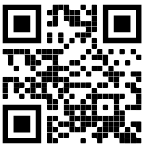User experience design is a concept that has many dimensions, and it includes a bunch of different disciplines—such as interaction design, information architecture, visual design, usability, and human-computer interaction.
User experience design is also the process of enhancing user satisfaction with a product by improving the usability.
User experience design encompasses traditional human–computer interaction design. It includes the practice of designing products, processes, services, events.
According to the established design process and the product goals, UX design is used to complete the product design with great user experience and experience different product interactive design process.
Chapter 1 – The Reason — 10%
You must know that what is the role of a UX designer. you need Learn about the project lifecycle, who needs to be involved, and how to set yourself up for success. and set a plan for great communication.
1) The UX project from scratch
2) Success and failure: an applicable approach
3) Must-have UX skills
Chapter 2 – Introduction — 10%
Let you know that what is user experience. how you can start off on the right design in
this course. Let you deeply understand UX, understand the research methods of user experience.
1) Fundamental Concepts
2) What is UX
3) UX nowadays
Chapter 3 – Research and Prototype- 15%
Learning how to interpret user’s behavior is the key point of establishing the interaction between users and products. It is also the foundation for building good products, and improving customer retention, therefore it can ensure that our products satisfy customers needs and eliminate the guesswork during the design process.
1)Understand the needs of users: conversation, survey
2)Investigation and discuss
3)Research: data analysis and online experiments
Chapter 4 – Core needs analysis – 15%
Learning how to analyze users’ feedback, and find out what core demands are; Moreover, it is necessary to analyze competitors and reveal insights about the competitive landscape. Classify the problems found and conceive to generate new ideas.
1) Case studies
2) user interview
3) Conduct your workshop
4) Organize research output
5) Research competitive market
6) Specify principles for project design
Chapter 5 – Information architecture – 10%
Learning the key points, you must know: the target customers, the technology associated with the website, and the user’s data. Introduction to design extends website maps, architecture levels, classification.
1)Design Principle: Overview
2)Design, operation and experimental analysis
3)Information architecture
4)Wireframes
5)Wireframe and prototype
Chapter 6 – Interactive Design – 15%
Learning how to create navigation and architecture levels. You need to know what users expect to see and what kind of connections we want to make between the content of the website. This chapter will also cover the site map extension design, and how to clarify the hierarchical structure of the site content.
1)How to establish the navigation and architecture
2)Input and interaction
3)Page flow chart
4)Data modeling
Chapter 7 – visual design – 20%
Learning how to do visual design including typography and color design. Make the product a good visual experience for the user
1)Design mode
2)Visual design: typography, color
3)Making labels
Chapter 8 – case study – 5%
1)Final project: Design a UX interface for Timebank
2)Functional visibility and indication signals
3)Conceptual model and system image
4)Evaluation and execution

